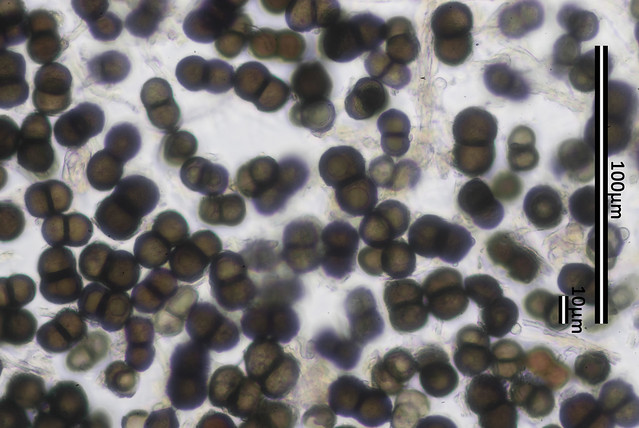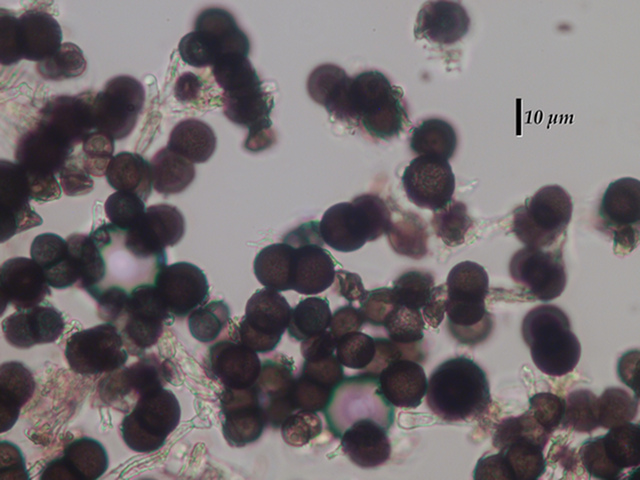Xataface
Crustose.net HOME
Top
- HOME
- Introduction
- History of "Caliciales" and the Origin of the "Calicioids"
- Biogeography of Calicioids
- Calicioid Ecology and Habitats
- Conservation
- Zen and the Search for Calicioids
- Collecting and Curating
- Key to Genera
- Acolium
- Acroscyphus
- Allocalicium
- Bruceomyces
- Calicium
- Chaenotheca
- Chaenothecopsis
- Cyphelium
- Cryptocalicium
- Microcalicium
- Mycocalicium
- Phaeocalicium
- Pseudothelomma
- Sclerophora
- Sphinctrina
- Stenocybe
- Texosporium
- Thelomma
- Tholurna
- "Within-bark"
- Glossary
- References
0.01 (development)
Eric B. Peterson
Pseudothelomma
This genus is collected primarily from old wood fence posts, although it can be found on natural wood as well.
Taxa covered (2):
Key to Species
Validation script believes all taxa are included in the key(s).
- 1a. Ascomata abundant; thallus lacking ruptures that form dark soredia. Widespread but within North America this is most abundant in coastal areas of the Pacific Southwest.Pseudothelomma occidentale
- 1b. Ascomata absent or infrequent; thallus with frequent ruptures that form patches of dark soredia. Widespread, but within North America this is most abundant in semi-arid portions of the western interior.Pseudothelomma ocellatum
Species Details
Pseudothelomma occidentale (Herre) M. Prieto & Wedin
ID=204
Type(s):
Synonyms:
Habit and Morphology:
Anatomy:
Chemistry:
Habitat:
Biogeography:
Global Rank:
Conservation:
Notes:
External Information:
ID=204
Type(s):
Synonyms:
Habit and Morphology:
Anatomy:
Chemistry:
Habitat:
Biogeography:
Global Rank:
Conservation:
Notes:
External Information:
 Index Fungorum: ID=
Index Fungorum: ID= Encyclopedia of Life (EOL): Search
Encyclopedia of Life (EOL): Search - CNALH: Search
- NatureServe:
 ODBaL Search
ODBaL SearchNucleotide Search
Pseudothelomma ocellatum (Flot. ex Körb.) M. Prieto & Wedin
ID=205
Type(s):
Synonyms:
Habit and Morphology:
Anatomy:
Chemistry:
Habitat:
Biogeography:
Global Rank:
Conservation:
Notes:
External Information:
ID=205
Type(s):
Synonyms:
Cyphelium caliciforme (Flotow) Zahlbr.
Habit and Morphology:
Thallus grey, verrucose to areolate, with areolae fracturing and forming black isidioid soredia.
Ascomata infequent, immersed in areoles.
Anatomy:
Chemistry:
Habitat:
Biogeography:
In western North America this is locally abundant in semi-arid regions. Most collections come from fenceposts but in some areas where Juniperus spp. exists with a minor component of Pinus ponderosa this can be found commonly on dead wood Juniperus.
Global Rank:
Conservation:
Notes:
External Information:
 Index Fungorum: ID=
Index Fungorum: ID= Encyclopedia of Life (EOL): Search
Encyclopedia of Life (EOL): Search - CNALH: Search
- NatureServe:
 ODBaL Search
ODBaL SearchNucleotide Search
Count of taxa = 2







